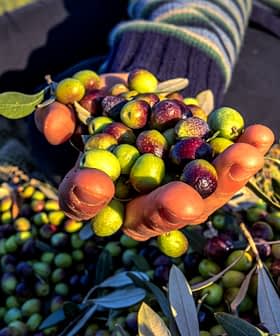Global olive oil production reached 3,010,000 tons in the 2020/21 crop year, according to the latest data from the International Olive Council (IOC).
The final total for the previous crop year was about eight percent below the 3,266,500 tons reported in 2019/20.
However, the annual figures published by the IOC show a partial rebound is expected in the 2021/22 crop year, with production reaching 3,098,500 tons, about three percent more than the previous season.
See Also:Global Olive Oil Imports SlipThe challenging climate in many parts of the world may have played a role in stressing olive groves and reducing overall production in the current crop year.
An unusual and severe spring frost throughout Europe, heatwaves and drought across the Mediterranean basin and extraordinary climatic events, such as violent hailstorms and large wildfires, contributed to a complex season for many producing countries.
The IOC reported that 93 percent of the overall olive oil production – 2,809,500 tons – came from its 16 member countries and the European Union.
Back in the 2020/21 crop year, the European Union outperformed the previous crop year’s results by 6.8 percent, primarily due to the higher yields reported in Spain.
The world’s largest olive oil producer reported a 23-percent increase, reaching 1,389,000 tons. Meanwhile, production in Greece was stable at 275,000 tons, Italian yields fell 25 percent to 273,500 tons and Portugal saw its production drop by 29 percent to 100,000 tons.
Outside the E.U., IOC data show an 8.7‑percent drop in Turkey, whose production reached 210,000 tons and an increase of 10 percent in Morocco to 160,000 tons. Meanwhile, Algeria saw its production drop 44 percent to 70,500 tons.
However, the biggest fall in production in northern Africa was reported by Tunisia, whose yield dropped by 68 percent to 140,000 tons.
According to the IOC, olive oil consumption fell by more than four percent to 3,125,000 tons in the 2020/21 crop year. Of this total, IOC member countries consumed 2,054,000 tons of olive oil.
The IOC forecasts that world olive oil consumption will grow nearly three percent in the 2021/22 crop year to reach 3,214,500 tons.
The E.U. is expected to produce 1,974,100 tons of olive oil in the same period, 3.8 percent less than the previous season. Overall, the IOC expects member countries will produce 2,910,500 tons of olive oil.
The IOC has also estimated a 10-percent decrease in table olive production in the 2020/21 crop year, with the total yield falling to 2,661,000 tons.
Spain experienced 19-percent growth and produced slightly more than 20 percent of table olives globally. However, Egypt saw its table olive production drop 23 percent.
For the 2021/22 crop year, the IOC expects to see a seven-percent production increase to 2,486,500 tons, with consumption growing 1.2 percent compared with the previous year.








